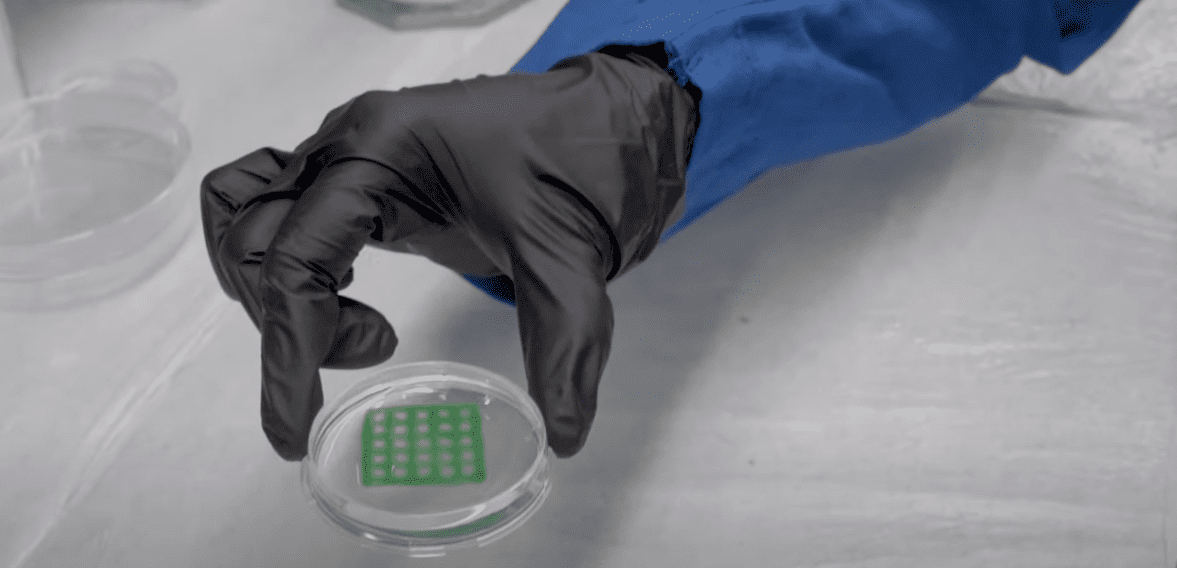September 15, 2023 — Researchers from the University of California, San Diego have introduced a groundbreaking material to help clean-up water pollutants . This material is unique in that it’s alive, 3D-printed, and made from seaweed and special bacteria.
. This material is unique in that it’s alive, 3D-printed, and made from seaweed and special bacteria.
What Makes This Material Special?
The standout feature of this material is its “living” nature. Essentially, it’s a combination of a seaweed substance and bacteria. These bacteria are not ordinary; they have been tweaked to create an enzyme that turns harmful pollutants into harmless molecules. Once these bacteria have done their job, they can be safely removed using a molecule found in everyday items like tea and chocolate.
Jon Pokorski, a nanoengineering professor, was quoted by the University  as saying, “The real magic is combining a common material with a living system. This gives us something that can act and react in ways regular materials can’t.”
as saying, “The real magic is combining a common material with a living system. This gives us something that can act and react in ways regular materials can’t.”
The Process.
The creation begins with alginate, a substance from seaweed. This is mixed with cyanobacteria, a kind of bacteria that lives in water and can carry out photosynthesis. When this mixture is put into a 3D printer, the best structure to keep the bacteria functioning optimally is a grid-like design. This design allows maximum exposure to essential things like nutrients and sunlight.
This structure not only keeps the bacteria “happy,” but also makes the material excel at cleaning up contaminants.
The Proof.
To show that their creation works, the team made the cyanobacteria produce an enzyme named laccase. This enzyme is known to neutralize several pollutants like certain chemicals and dyes. Their experiment successfully cleaned up a blue dye, indigo carmine, commonly used in denim.
Once the cleaning was done, the bacteria needed to be removed. The researchers achieved this by making the bacteria self-destruct in the presence of a molecule called theophylline. Pokorski explained , “After the material cleans the water, we can add a simple molecule to safely get rid of the modified bacteria. This way, we don’t have to worry about them harming the environment.”
, “After the material cleans the water, we can add a simple molecule to safely get rid of the modified bacteria. This way, we don’t have to worry about them harming the environment.”
Looking ahead, the researchers hope to design bacteria that can self-eliminate without any extra chemicals, making the process even more eco-friendly. Pokorski shares the team’s enthusiasm, stating, “We’re eager to see where this can go. Combining expertise from different fields makes discoveries like this possible.”
In the end, this research represents the potential of collaborative efforts, with Pokorski proudly saying, “It’s all about bringing minds together at the UC San Diego MRSEC.”
Published Research.
“Phenotypically Complex Living Materials Containing Engineered Cyanobacteria .” Co-authors include Debika Datta*, Elliot L. Weiss*, Daniel Wangpraseurt, Erica Hild, Shaochen Chen, James W. Golden, Susan S. Golden and Jonathan K. Pokorski, all at UC San Diego.
.” Co-authors include Debika Datta*, Elliot L. Weiss*, Daniel Wangpraseurt, Erica Hild, Shaochen Chen, James W. Golden, Susan S. Golden and Jonathan K. Pokorski, all at UC San Diego.
*These authors contributed equally to this work.
This work was supported in part by the UC San Diego Materials Research Science and Engineering Center (UC San Diego MRSEC) and the National Science Foundation (DMR-2011924).
Image: Screenshot from the University’s YouTube video.


Leave a Reply